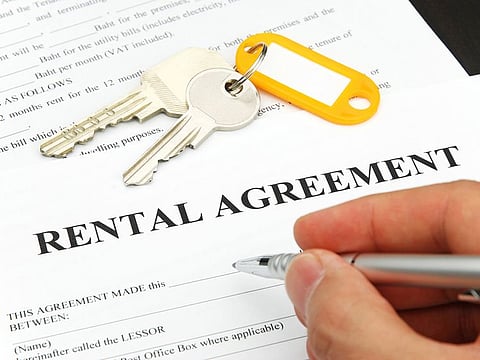Renewing your rental contract in 2026? Here’s what you should know
Rents to rise steadily in 2026 as Dubai’s property market enters a more balanced phase

Dubai: Dubai’s rental market is heading into 2026 on a steadier footing, with rents expected to rise but at a slower pace than in recent years. The city’s maturing property cycle is giving both tenants and landlords more clarity, and more room to negotiate.
"Dubai's rental market is expected to maintain steady growth through early 2026, though the pace of increases will likely be moderate compared to the past two years,” said Blagoje Antic, Chairman and CEO of DHG Holding. “Demand remains strong in well-connected, master-planned communities driven by sustained population growth, business inflows, and relocation of high-income professionals.”
When buying your dream home, there are two essential things to check before investing in an off-plan or ready-to-move property. First, always get your bank pre-approval before paying any down payment to avoid financial stress later. Second, when applying for a mortgage, consider your age to plan the right loan tenure and manageable monthly installments. Having a well-planned investment budget ensures peace of mind, financial stability, and a smooth path toward owning your dream property.

That demand is no longer uniform across the city. “As more new supply enters the market in areas like Meydan and JVC, rental growth will become more segmented, with premium, newer projects outperforming older stock,” Antic said. “The overall trajectory remains positive, supported by strong fundamentals rather than speculative demand.”
What tenants should watch when renewing
For tenants renewing their leases in 2026, awareness of market rules is key. “Tenants should pay close attention to RERA’s rental index and comparable listings in their area before negotiating renewals, as rent caps are designed to ensure fairness and prevent sudden increases,” Antic said.
He advises renters to clarify maintenance terms, payment schedules and notice periods before signing. “With many landlords preferring longer-term stability, tenants that show reliability and commit to 12-month or multi-year leases may have more leverage to negotiate favourable terms,” he added.
Landlords are offering more flexibility
As more supply enters the market, landlords are prioritising retention over short-term gains. “Flexibility has become more common, though it depends on the property type and location,” Antic said. “The trend reflects a broader effort to attract long-term tenants and maintain occupancy amid growing supply.”
Tenants can expect multiple-cheque payment options and incentives to secure leases in some developments.
Older properties stabilise, new ones lead
The performance gap between older and newer properties continues to widen. “Rents for older properties are showing signs of stabilisation, especially where infrastructure or community amenities have aged,” Antic said. “While newer developments with modern layouts, energy-efficient designs, and lifestyle amenities continue to command premium rents.”
“The market is becoming increasingly quality-driven,” he added. “Tenants are willing to pay more for well-managed, contemporary environments that align with their lifestyle preferences.”
Affordability remains a key factor shaping movement. “Affordability and space are key drivers of relocation, as many tenants are moving from central districts like Downtown and Business Bay to emerging areas such as Meydan, JVC, Dubailand, and Dubai South,” Antic said.
“These districts are benefiting from improved infrastructure and connectivity, coupled with lifestyle-oriented communities that make them increasingly attractive,” he added. “This decentralisation trend supports Dubai’s long-term urban planning vision of balanced, multi-nodal growth.”
Outlook for 2026
As Dubai enters 2026, the rental market is moving toward stability and long-term value. For tenants, it means better negotiation opportunities, for landlords, a focus on quality and retention
“Dubai’s rental market today is not about chasing short-term peaks,” Antic said. “It’s about building value, stability and trust between landlords and tenants. That’s what will define the next phase of growth.”
Sign up for the Daily Briefing
Get the latest news and updates straight to your inbox



